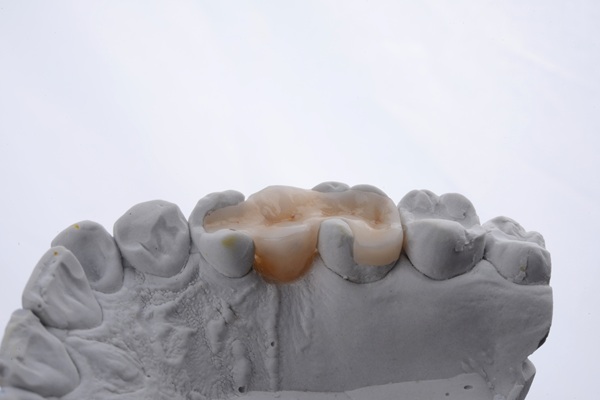A Step-by-Step Guide to Getting a Dental Inlay

A dental inlay is often necessary for teeth that are in bad shape, whether it be due to cavities or accidental injuries such as cracks or chips. However, among dental restorations, inlays are not the most common type. Most people are familiar with dental fillings or crowns, but general dentists also recommend dental inlays for additional types of problems. Because dental inlays are not as familiar to most people, it is a good idea to review how they work and what the process is like. Ready to learn more?
What are dental inlays?
Dental inlays are indirect dental restorations that are placed in between the cusps of a tooth. They are custom created in a dental lab, which requires patients to visit their dentist's office multiple times throughout the process. Dental inlays are typically made of composite resin or porcelain, depending on the patient's desire and the dentist's recommendation. Both materials can be made to match the patient's original tooth color, which makes for a discreet and aesthetically-pleasing restoration.
A step-by-step guide to dental inlay placement
During the first appointment, the dentist will numb the treatment area using a local anesthetic, ensuring the patient will feel little to no discomfort. Once the area is numb, the dentist will use a dental drill to remove dental decay from the tooth. If there is a crack or chip in the tooth, the dentist will use a different dental tool to smooth the surface of the tooth.
Then, the dentist will take an impression of the tooth that requires the dental inlay. Then, the impression will be sent off to the dental lab. The dentist will place a temporary seal over the treated tooth to protect it from bacteria while waiting for the permanent inlay.
Once the dental inlay is done, the patient will return to the dental office. The dentist will use dental cement to secure the inlay in place. A follow-up appointment may be required to ensure that the dental inlay fits and works as designed while remaining comfortable and healthy.
When dental inlays are needed
Dental inlays are typically recommended when a patient has a cavity that is too large for a dental filling. Additionally, they are recommended when the tooth doesn't have enough surface space for a dental crown to be used. Outside of cavities or tooth decay, dentists recommend inlays for patients that have minor cracks or chips in between the cusps of a tooth.
Reach out to our Pembroke Pines office today
Would you like to learn more about the dental inlay process? The Pembroke Dental & Spa is here to answer any questions you may have. Reach out to our Pembroke Pines office to learn more or to schedule a consultation.
Request an appointment here: https://pembrokedentalspa.com or call Pembroke Dental & Spa at (954) 526-2226 for an appointment in our Pembroke Pines office.
Check out what others are saying about our dental services on Yelp: General Dentistry Services in Pembroke Pines, FL.
Related Posts
Maintaining good oral health is essential to a healthy lifestyle. Regular visits to a general dentist are crucial in preventing and treating different dental issues. General dentists provide a wide range of services, such as preventive care, restorative treatments, and oral health education. However, if you are new to an area or are changing dentists,…
Dental care plays a pivotal role in maintaining a healthy and beautiful smile. General dentists provide various services to help individuals achieve optimal oral health. This blog will explore the most commonly asked questions about general dentists and explain their diverse services.General dentistry is a type of dental care focused on preventing, diagnosing, and treating…
Clenching and grinding the teeth, also known as bruxism, can wear them down and cause jaw and ear pain. General dentists can help patients with bruxism avoid pain and discomfort. This blog will review the causes, symptoms, and treatments for teeth grinding.It is common for people to be unaware they clench or grind their teeth…
Though we go to our general dentist all the time, one thing that not everyone considers is the fact that the dentist is the one that handles most of our oral health issues. How is it that one dentist is responsible for treating and diagnosing so many of our problems without the help of specialists…
